| Thrips
as pests |
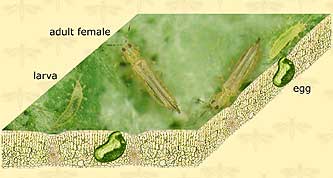 |
| Adult
and larval thrips damage plants through both direct feeding and the introduction
of tospoviruses. All Thysanoptera have suctorial mouthparts comprising
paired, needle-like maxillary laciniae that are co-adapted with tongue-and-grooved
margins to enclose a single channel. Only the left mandible is developed,
and this is used merely to puncture plant cells prior to their contents
being ingested through the feeding tube provided by the maxillary stylets.
In contrast, bug species, members of the order Hemiptera, have suctorial
mouthparts that involve two mandibular and two maxillary stylets, and
these enclose separate channels for saliva injection and food ingestion. |
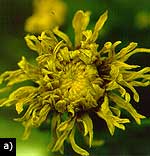 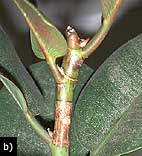 
|
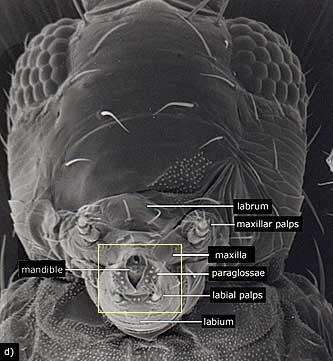 |
| Thrips
damage: leaf
and blossom damage of a) Chrysanthemum (Thrips
tabaci),
b) Ficus and c) Phaseolus (Frankliniella
occidentalis) (photos:
G. Moritz). |
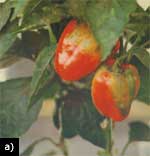 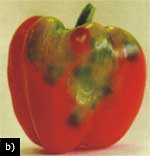 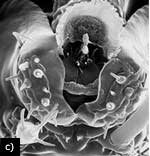 |
| Frankliniella
occidentalis: leaf and fruit damage of pepper (a and b),
c) and d) head, ventral with typical mouthparts forming the hypognath
mouthcone, labial palps, paraglossae and stylets (SEM, see Moritz
1997) (photos: G. Moritz). |
| Feeding
by thrips on young leaves commonly results in these becoming distorted;
in extreme instances this can result in stunting of a plant or even in
defoliation. The distorted and partially chlorotic leaves of such plants
can appear to have been attacked by a virus, but this leaf damage, presumably
caused by toxic saliva, should be distinguished from true viral infection
(see tospovirus vectors). Lewis
(1997) gives
an extensive overview and bibliography of the biology of thrips, with
particular reference to species associated with crop plants. |
















